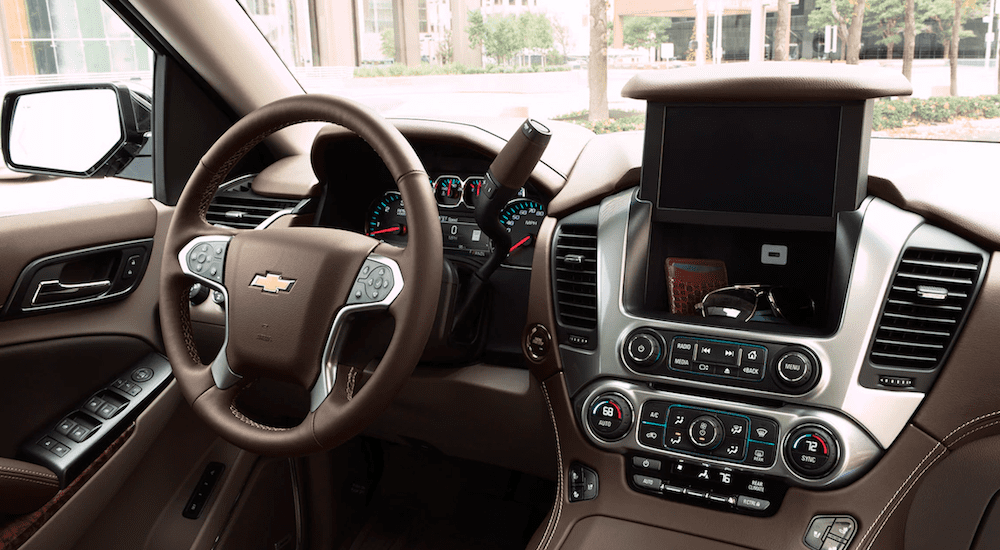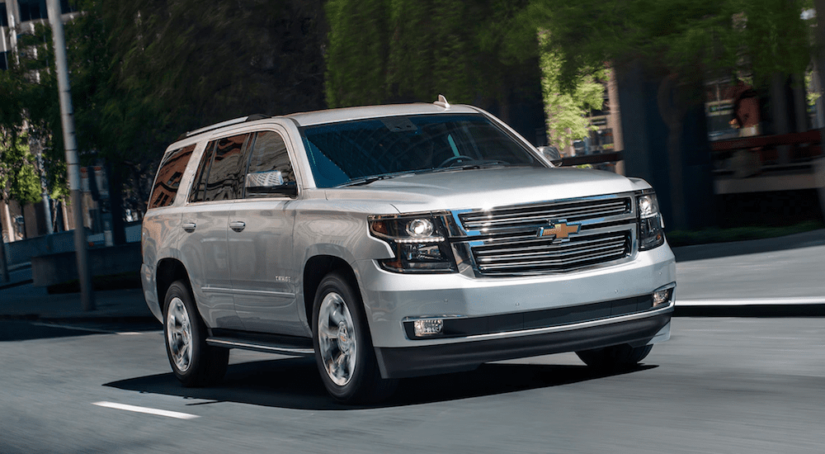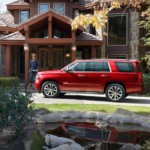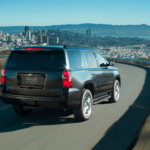The number of SUV’s released by automakers today is astounding. Lower gas prices combined with consumer want has given rise to peak popularity for the sport utility vehicle over the past five to six years and has even caused some car companies to actually discontinue cars/sedans from their entire lineup of vehicles; car companies are now only SUV/Truck companies. The auto industry is transitioning to meet consumer demand, and the consumer is left, thankfully, to choose from a slew of SUV options. So how do you sift through the many SUV brands, the duds, and those pesky lemons, to find the SUV to fit your personal needs? Luckily, we are here to help you sort through all the particulars of each SUV. Even before getting into all the trim levels of each vehicle, you should pick between full, mid, or crossover to narrow your selection; base this primarily on what and how you will use your vehicle. If you happen to choose full-size, then we have some beneficial information below as we breakdown two of the market’s best selling full-size SUVs, the 2019 Chevy Tahoe vs 2019 Dodge Durango.
Performance
If it is raw, utilitarian power your after, the Tahoe is the beast you want to be burdened with at the end of the day. This full-size SUV comes with a standard 5.3-liter V8 that churns out 355 horsepower; and as if that was not enough, power, Chevy now offers an optionable 6.2-liter V8 good for 420 hp. for its’ premier line. Edmunds tested their 4WD Tahoe LT (the smaller 5.3-liter V8) which managed 0-60mph in a mere 7.3 seconds. Geared for towing large hauls, the Chevy Tahoe is a little slow on response to the pedal, but you do not drive a full-size SUV with this much power under the hood for sporty handling or quick response time. You drive it because no matter the job, the Tahoe will get it done. Rear-wheel drive is standard and four-wheel drive is an extra cost option on all Tahoes.
To contrast, the Durango is more of a 3-row crossover sedan than a true full-size SUV. A distinction that is fully apparent in its’ standard 293 hp V6 engine which feels more like it pulls on or drags the crossover across the finish line due to its heavy frame. The engine, although no slouch, performs sluggishly beneath such a massive frame. It still manages to maintain categorization as a full-size in engine strength with its two 360 hp V8 engine offerings but those advantages are the result of costly upgrades. In car and driver’s tests, the V6 went from 0-60mph in 7.4 seconds while the V8 managed it in only 6.2 seconds. Clearly, the V8 option is the only choice for power and performance.
Utility
The Tahoe is essentially a truck with an SUV shell covering it. Well, a truck that can seat up to 9 and handle the heavy-duty towing jobs of a much larger full-size vehicle. With the proper equipment, the 4WD Tahoe is rated to tow a maximum of 8,400 pounds; no sacrifices are made in the design of the Tahoe as it hauls more and goes further off-road than most crossovers. The 2019 Chevy Tahoe comes standard with a concealed 2-inch receiver hitch that has both integrated four- and seven-pin wiring allow for the transfer of power for the lighting as well as auxiliary functions; An integrated electric trailer brake controller and a rear leveling suspension are also available increasing driver’s towing confidence.
For a crossover car (car being used as a pejorative word) the Durango packs a lot of pulling power making it a formidable rival; as a rival crossover car, though, it pales in comparison even in seating only being able to carry up 7, though mind you the third row is often mentioned in reviews as comfortably adult size so clearly plenty of legroom. Another shortcoming is in the standard offered V-6 engine’s lack of towing power; in order to get the Durango’s maximum towing capacity of 7400 pounds, you have to pick up the much larger V-8 engine as well as the rear-wheel-drive option; both of these options are highly recommended to optimize the Durango’s full potential, but they definitely come with a sharp price increase. The standard V-6 and all-wheel-drive models earn a lower 6200-pound rating which is still impressive for any crossover by industry standards but fails to match up with the more impressive Chevy Tahoe.
Technology

On the technology front, the Tahoe and Durango match up nicely. Most automakers are offering vehicles at these price tags, upwards of $30-40 thousand, stay up-to-date with the newest tech offerings to stay relevant. The Tahoe offers smartphone integration that operates smoothly with uninterrupted connectivity; The quick-acting touchscreen of the infotainment screen is intuitive with easy to navigate and read toggle options. The Durango has a similarly intuitive infotainment system run on fast enough processing software and a choice of two large touchscreen displays to work with. Both vehicles also offer Apple CarPlay and Android Auto, and both programs easily connect with uninterrupted quickness to work as expected. The Bluetooth pairing for both is quick and easy providing clear reception and each of the cabins benefit from the inclusion of multiple USB ports.
Where the Durango falls short once again is in the offering of safety features. On the safety front, the Chevy Tahoe comes standard with Chevy’s teen-driver monitoring system, blind-spot monitoring, rear cross-traffic alert, forward parking sensors, forward collision alert, and adaptive cruise control with automatic braking. Chevy also offers a unique setting for its adaptive lane monitoring warnings that only vibrate the seat to alert the driver (this feature, fortunately, can also be turned off). Chevrolet also offers towing tech options for the Tahoe in its trailering package that includes rearview tow cameras as well as sensor readings made available on your infotainment system inside the vehicle. The Durango’s “Technology Group” is only available as an option and currently not available on base SXT trims; that means options like adaptive cruise control, blind-spot monitoring, automatic emergency braking, lane departure warning and lane keeping assist do not come standard on lower trim levels. It seems that once again, the Durango provides for a costly upgrade price potential options that some automakers, like Chevrolet, and drivers already may deem industry standards.
THE VERDICT
As car companies become SUV and Truck Companies, the available inventories of SUVs will increase as will the disproportionate number of duds in automakers fleets. As far as the full-size SUV comparison between the 2019 Chevy Tahoe vs 2019 Dodge Durango, the clear winner for utility in a higher performing, safer vehicle is the Chevy Tahoe. The Durango is by no means a failure of a crossover, but it is a poor substitute for a full-size SUV. From an engine perspective, you have the power to tow with both vehicles but only the Tahoe can show up to a full-size truck job and get it done. The major failing of the Durango is probably the absence of safety features that have become industry standards; whereas Chevrolet has stepped up to the safety challenges making and slightly improving safety features such as lane assist, the Durango has failed to step up to the plate and shows that it is a little late to the game. The Tahoe can both carry more people and more loads by pound limit while doing that in style.



